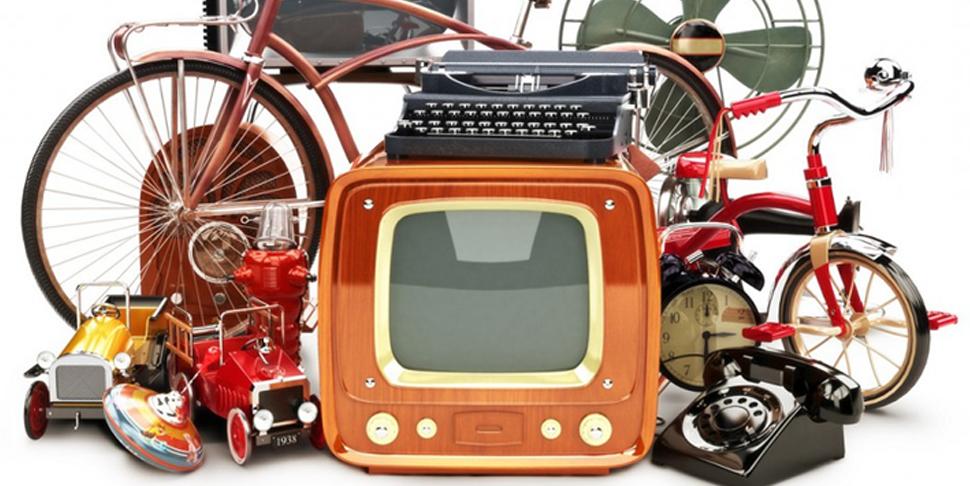by
Stacy Wise
| May 29, 2019

How to Dispose of Your Personal Property
By Rick Imhoff, CFP ®
Having settled hundreds of estates and trusts over the years, I have seen just about everything. The one area that provides the most unique circumstances and entertainment is dividing up the deceased’s personal property among his or her heirs. Unlike bank accounts, real estate, automobiles, and investment accounts, which typically are easily sold or transferred to the heirs, the disposition of personal property at death is many times the most difficult area of estate planning due to the perceived versus real value of items and the emotional attachment each of the heirs have for different items.
I remember one trust where the widower father named Bill included a provision in his trust agreement that all his personal property, which included a lot of tools, fishing equipment, old dishes, antique furniture, and various collections, was to be divided as his four children agreed. At the beginning, it seemed like it might not be a bad idea until I learned that one of his sons could be a little hard to deal with. In addition, each of the four children had their own children who also had interest in some of the property. So, we set up a date and time where everyone would meet at the house and begin the process of dividing up everything. It was pretty much a free-for-all, but fortunately, there was no shouting, name calling, or injuries.
When working with another family, the father named John told me about a child-sized rocking chair he hand-made for his first-born son that was used by each of his next four children that followed. Of course, all five children wanted to have the rocking chair after their father passes away and let that fact be known to the father every chance they had. Growing increasingly tired of hearing who he should give the rocking chair to when he died, he decided he was going to break it down and give a piece to each child!
Probably the most common method I heard or saw, was to write a child’s name on a Post-It note or piece of masking tape and place it on each item. Interestingly, many times the notes “mysteriously” disappear or appear on another item even to the point of wearing out the sticky part of the note. In one instance, I noticed some of the notes had different handwriting. Surely none of the future heirs had anything to do with that!
I can share numerous other stories about how this part of an estate plan can be an issue, but here are some ideas to discuss with your attorney. These ideas might make the disposition of your personal property more efficient and hopefully reduce or even eliminate any ill feelings among your heirs.
One method that works well is to give it all (or most of it) away while you are alive. I call this “Mom’s Method” because that is what my mom has done. She wanted to make sure me and my four siblings got the things she wanted us to have, return to each of us the items we had given to her and our father over the years, and make the final decision as to who got what if there were any conflicts.
For those who wish to keep everything until they pass, another method would be to include a provision in the will or trust as to how the personal property is to be divided. This would be like Bill’s situation above, but with the added twist of creating a list of items and which child would receive that item. This would have likely been a discussion Bill had with each child when creating his estate plan or based on past experiences or interests of each child with Bill. For example, a common interest in stamp collecting between Bill and his eldest son.
As for John and the rocking chair, of course it would have not been good had John broke it down and gave a piece to each child. An option for John would be to include in his estate plan a process to resolve possible conflicts, particularly for an item with such emotional attachment as the rocking chair. In this instance, John could have all interested heirs “draw straws” or use a similar selection method conducted by a neutral party and the “winner” would get the rocking chair. The other heirs might not be happy, but at least the rocking chair survived.
As for the Post-It note method of distribution, if you are going to go to that much trouble, you might as well just list those items in your estate plan to make it legal and not have to worry about mysteriously lost or changed notes. Unless you are fully into Mom’s Method, the best practice for an effective estate plan is to discuss with your attorney various methods of how to dispose of your personal property at death and to include the appropriate language in your will or trust resulting in an efficient and less emotional experience for your heirs.
Rick Imhoff, CFP®, is Executive Vice President & Senior Trust Officer for MidAmerica National Bank. He can be reached at 309-647-5000, ext. 1130 or by email.
Investments are not FDIC-insured, hold no bank guarantee, may lose value, are not a deposit, and are not insured by any federal government agency.